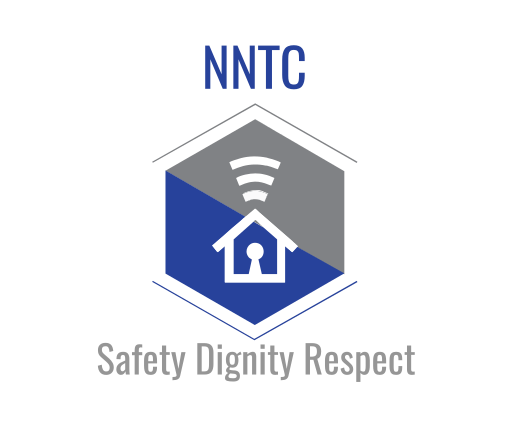
October 1, 2021
By: nntc
How to Manage Bullying & Harassment At Work
Manager Responsibilities
- All managers have a duty to establish and maintain a working environment free from harassment and bullying, by setting behavioural standards and modelling appropriate behaviour. A failure by a manager to implement this Policy, or deal appropriately with harassment or bullying could in itself lead to disciplinary action.
- Any manager who receives a complaint of harassment or bullying has an obligation to do something. This may be simply speaking to the individual alleged to have caused the problem, or by seeking advice from a more senior manager or HR Manager. Confidentiality about the issue is paramount, however confidentiality should not constrain manager’s obligations to deal with situations. In all instances, individuals who perceive themselves to have been harassed or bullied should be encouraged to use the complaints procedure.
- Any manager who receives a complaint of harassment or bullying, or is witness to harassment or bullying, must investigate the complaint or incident and ensure that the problem is resolved as quickly as possible.
Positive Leadership
- Let your staff know that you support the principles of diversity and demonstrate those principles in your everyday work
- Consult, involve and value your staff – recognise their achievements and differences
- Confront inappropriate behaviour wherever you see it – if you don’t your staff will think it is acceptable to behave in this way
- Recognise the legal and personal significance of bullying and harassment issues.
Setting Standards
- Clearly explain what is, and isn’t, acceptable behaviour – reinforce positive behaviours
- Set clear performance objectives / targets/ goals so that staff know what is expected of them
- Be clear about the conduct expected from staff – complying with employment contracts, local rules etc.
- Confront those who don’t meet the standards – if you allow some people to ‘get away with it’ other staff will see this behaviour as acceptable, or simply think you don’t care
- Review your own use of language and expression so as to be sure that you are not inadvertently causing offence
- Listen to individuals who may be victims of bullying, harassment, victimisation – understand how they feel, gain their trust and demonstrate your commitment to resolving the situation – taking it seriously
- Making reasonable adjustments for people working with disabilities
- Pay particular attention to new employees, who may have come from a different working culture and environment.
- Do not assume that ‘no complaints, means that there are no problems.
- Ensure that no-one is harassed or victimized for making a complaint or supporting a complainant.
- Do not wait for a complaint to be made. Do not accept the excuse that ‘I was only joking’ in harassment cases.
- Become thoroughly familiar with the Bullying & Harassment Policy and related policies and procedures on Discipline and Equal Opportunities.
- Implement all procedures consistently and fairly – ensure that you treat staff equally
- Seek guidance / help from appropriate people when unsure about the best course of action
- Be aware of how to conduct a simple informal interview
- Take what they say seriously, keep an open mind and don’t prejudge
- Make sure that you investigate thoroughly
- Allocate sufficient time in a private place with no interruptions
- An initial interview is not about assessment but listening and encouraging
- Check that you have understood by paraphrasing, reflecting back and asking for clarification. Do not give solutions
- Give them a copy of the Policy and discuss it with them
- Help individuals to understand that there is nothing wrong with them and it is not their fault
- Listen to their story
- Explain to them how the policy works and what is likely to happen next
- Discourage them from gossiping to others and trying to get allies on their side
- Explore the possibility of asking a friend to attend the interviews with them to offer support
- Help them to understand the difference between acceptable and unacceptable behaviour
- Help them to understand the impact their behaviour has on others
- Enable them to accept responsibility for their behaviour
- Offer support and feedback during the change process
- Monitor the situation
-
Firstly, consider how best to try and resolve the issue, or correct any misunderstandings and consider other ways of ensuring that difficulties do not arise in the future.
-
It is important that you seek advice from relevant areas i.e. managers, HR, union representatives, legal or anyone that you feel comfortable talking with. If you are asked to attend meetings of any kind, you are allowed to take a neutral representative to the meeting.
-
In all cases a fair and objective investigation of the facts should be carried out and all parties will have the opportunity to state their views.
-
Where disciplinary action is taken; you will have rights as set out under the relevant policy. These will include the right to appeal against any decision, and the right to an explanation for any decision.
- Avoid being drawn into arguments or gossip concerning the complaint and remain discrete at all times. There is nothing to be gained from ‘getting people on side’ or encouraging others to try to remedy the situation. You must remain objective and calm no matter how unjust you feel the complaint may be.
Supporting Staff
Policies & Procedures
Working with a target of bullying
Working with a person accused of bullying
When a Complaint is Made Against You

